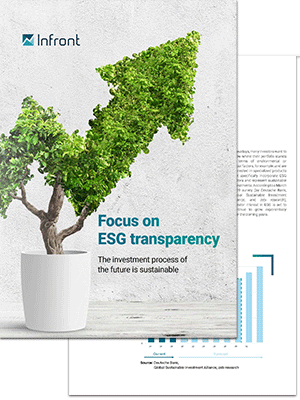Sustainability preferences and climate targets: ESG investments enter a new phase
Which products meet which sustainability criteria? Does the product comply with EU taxonomy goals? What is the current status under the Disclosure Regulation?

Investors are taking the financing of the transformation of the economy to a sustainable and thus stable system in the long term very seriously: at the end of March 2022, mutual funds with sustainability characteristics managed 563 billion euros for German investors. This represents 40 percent of the total money invested in mutual funds. Within a year, assets under management in sustainable products have risen by 80 percent, according to the German fund association BVI. A further boost is expected when the Mifid amendment comes into force on 2 August, when financial advisors will be obliged to ask about sustainability preferences.
Institutional investors are also taking sustainability criteria very seriously, as shown by a global survey of pension funds conducted by CREATE-Research and sponsored by the investment company DWS. More than half the pension funds reported that they have already implemented net-zero strategies in their portfolios or are planning to do so. In other words, their investment decisions are designed to help reduce CO2 emissions in a very specific way, in line with the goals of the Paris Climate Accords. The EU reference value Paris Aligned Benchmark (PAB) is playing an increasingly important role in this context. Funds and ETFs that track these indices thus fulfill environmental objectives in line with the EU taxonomy of limiting climate change and adapting to its consequences.
These two recent announcements highlight the fact that investing in stocks and funds on the basis of environmental and social criteria as well as good corporate governance (Environment, Social, Governance - ESG) can now be considered standard. It is no longer a question of ESG or not, but of access to the latest, relevant ESG data and regulatory ratings.
Which products meet which sustainability criteria?
Does the product comply with EU taxonomy goals?
What is the current status under the Disclosure Regulation?
Please find here an overview of the current status on:
- EU Sustainable Financial Disclosure Regulation (SFDR)
- EU taxonomy
- MiFID II amendment with definition of sustainability preferences as of 2 August 2022
Find more about the Infront ESG offer here.
Download our whitepaper:
Focus on ESG Transparency
ESG investing is here to stay. While EU regulations stressing the importance of ESG factors in the investment process and pushing markets for greater transparency, financial service providers are taking this to their advantage by sharpening up their competitive profile. In this white paper you will learn more about ESG regulation, impact, a use case and the success factor that is becoming increasingly apparent.






 Back to all news
Back to all news
